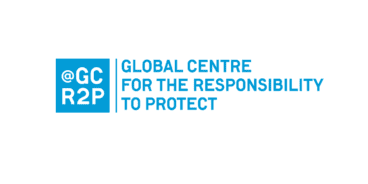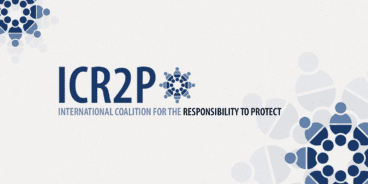Summary of the UN Secretary-General’s 2016 Report on R2P: Mobilizing collective action: The next decade for the Responsibility to Protect
The eighth report of the United Nations Secretary-General on the Responsibility to Protect (R2P) provides a vision for collective action to accelerate implementation of R2P amid an impending leadership change at the UN. The report is a follow-up to the 2015 report, which took stock of progress in implementing R2P ten years after its unanimous endorsement by all UN member states at the 2005 World Summit. The report surveys the challenging global context of mass atrocity prevention in 2016, marked by an unprecedented number of people displaced by conflict and persecution and a worrying global trend of some member states shirking their responsibilities under international law. The report assesses continued areas of debate surrounding R2P and provides recommendations on how member states and the UN system can best deliver on the collective commitment to protect populations from genocide, war crimes, crimes against humanity and ethnic cleansing. It is the last report on R2P by Secretary-General Ban Ki-moon, who placed the advancement of R2P as a core priority of his tenure. The report was produced following inputs provided by member states, regional organizations and civil society.
KEY POINTS
The Global Centre for the Responsibility to Protect would like to highlight the following key points from the report:
-
- The consensus built around the Responsibility to Protect is as strong as it is undeniable. The vast majority of UN member states are in agreement with the core principles of R2P and significant resources have been mobilized at national, regional and international levels to elaborate on what these principles mean in practice for the most vulnerable civilians at risk of mass atrocity crimes. This has included the establishment and expansion of the Global Network of R2P Focal Points, consisting of 55 countries (and the European Union) who have appointed senior-level officials responsible for mainstreaming R2P and mass atrocity prevention. This represents an incontrovertible marker of the normative progress achieved by supporters of R2P in a relatively short time span.
- Despite important conceptual progress, implementation of the 2005 political commitment by member states, regional organizations and the UN itself has been woefully inadequate in the face of a number of current crises where populations face mass atrocity crimes. The situation in Syria remains the most egregious example, with over 250,000 people killed and 11 million displaced since March 2011. In Syria and several other situations, states and non-state actors are blatantly disregarding their obligations under international human rights, humanitarian and refugee law. There is also an undeniable connection between the current global crisis of forced displacement and the failure to prevent mass atrocity crimes in Syria, Iraq, Yemen and South Sudan.
- Consistent and effective operationalization of R2P will continue to be beset by challenges. These include a lack of consistent compliance with the principles of international law, insufficient investment in structural prevention and continued unwillingness of some global powers, including several of the Permanent Members of the UN Security Council, to transcend political self-interest and meet their responsibilities to populations at risk of mass atrocity crimes.
- A lingering climate of austerity following the 2008 financial crisis has been compounded by the global crisis of forced displacement. Many member states continue to default to short-term and reactive engagements over long-term sustainable responses to situations where mass atrocity crimes have been committed. Taken together, these factors constrain the ability of the international community to address underlying causes of mass atrocity crimes, thereby increasing the risk of recurrence.
- There is a need for renewed commitment to uphold R2P and prevent genocide, war crimes, ethnic cleansing and crimes against humanity. This includes standing up for the principles of international human rights, humanitarian and refugee law, but also for important and related initiatives like the ACT Group’s Code of Conduct regarding Security Council action against genocide, war crimes or crimes against humanity, the French and Mexican Declaration on veto restraint in situations of mass atrocity crimes, and the Kigali Principles on the Protection of Civilians. Failing to deliver on the Responsibility to Protect, and the deeply interconnected issues of promoting human rights and protecting civilians, may discredit the UN in the eyes of populations dependent upon the organization for protection and assistance.
• Amid the impending change in leadership at the UN, it is crucial that the next Secretary-General make advancing the Responsibility to Protect and the prevention of mass atrocity crimes a core priority. All necessary resources should be mobilized to further mainstream the principle across the UN system. The new Secretary-General should continue to pursue the development of the Human Rights up Front Initiative and utilize his/her prerogative under Article 99 of the UN Charter to bring situations to the attention of the Security Council that may not be on its formal agenda. Finally, the efforts of the UN Office on Genocide Prevention and the Responsibility to Protect, which have been invaluable to advancing the global commitment to R2P, should be supported by the new Secretary-General.
The full report is available for download below.

